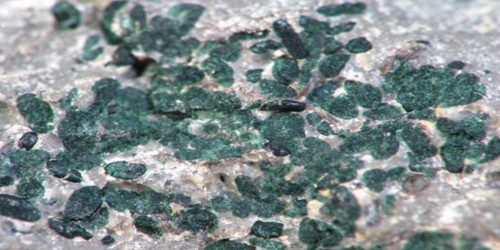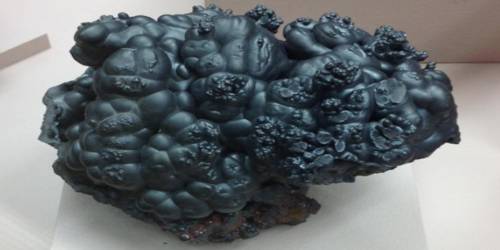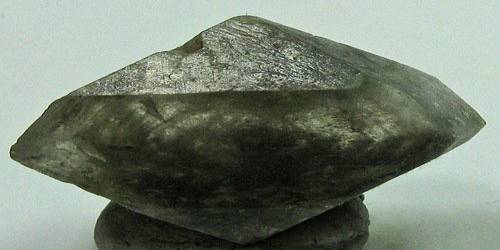Blossite is an anhydrous copper vanadate mineral with the formula: Cu2+2V5+2O7. It is a very rare sublimate, probably formed between 100–2000C, from the outer sulfate zone of a fumarole in the crater of a basaltic composite volcano. It was named for mineralogist Donald F. Bloss of Virginia Polytechnic Institute and State University.
Blossite occurs as black anhedral crystals, with dimensions not exceeding 150 um. Crystals of blossite have only been isolated with other fumarolic copper vanadates or sulfates. Blossite demonstrates a red-brown streak, prevalent in the natural copper present, this red-brown coloring is also prevalent in the internal reflections.
General Information
- Category: Vanadate mineral
- Formula: Cu2+2V5+2O7
- Crystal system: Orthorhombic
- Crystal class: Pyramidal (mm2) (same H-M symbol).

Properties
No cleavage is observed in blossite, but the size of the natural mineral grains of polycrystalline prohibit the identification of cleavage. In ultraviolet radiation blossite does not fluoresce, it demonstrates a white color when the blue-filtered white light in air is present and is opaque to transmitted light. The density of natural occurring blossite is 4.051 g/cm3.
- Color: Black, white in reflected light, red-brown internal reflections
- Crystal habit: Anhedral crystals and intergrowths
- Luster: Metallic
- Streak: Red-brown
- Diaphaneity: Opaque
- Specific gravity: 3.95 – 3.97 (measured on synthetic material) and 4.05 (calculated)
Natural and synthetic occurrence
Blossite was first described for an occurrence in the “Y” fumarole in the summit crater of Izalco Volcano, El Salvador. There it occurs with several high-temperature minerals including stoiberite, fingerite, ziesite, and mcbirneyite. The natural analogs of these compounds crystallize in the CuO-V2O5 binary system first studied by Brisi and Molinari (1958) and were first discovered as synthetic compounds. Blossite is the low-temperature polymorph of ziesite, β-Cu2V2O7. All of the blossite crystals identified to date are inter-grown with other fumarolic copper vanadates. The discovered location of these copper vanadates, in the outer sulfate zone of the fumarole, indicates a sublimation temperature between 100°C and 200°C.
Information Source:
















